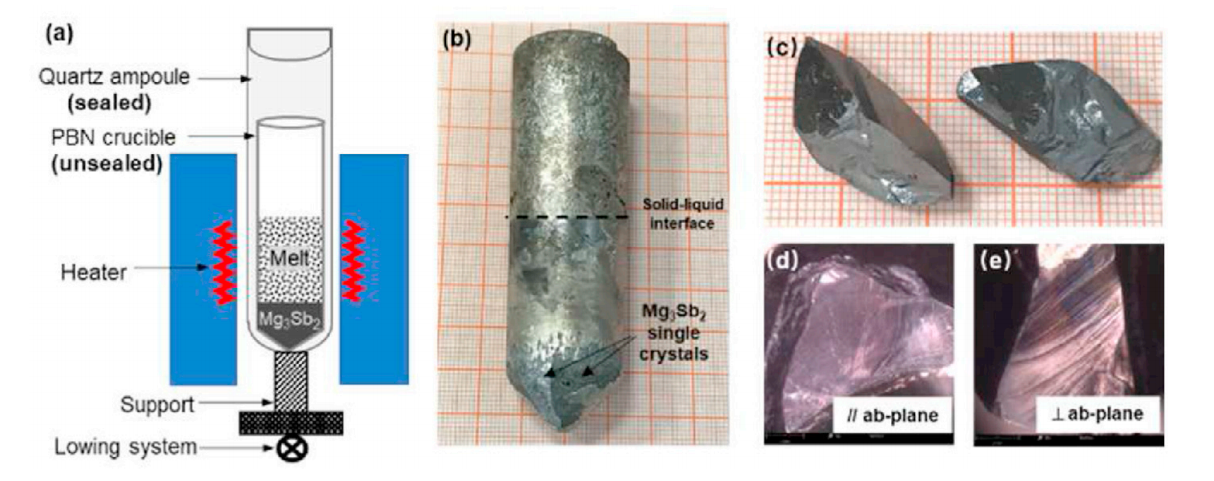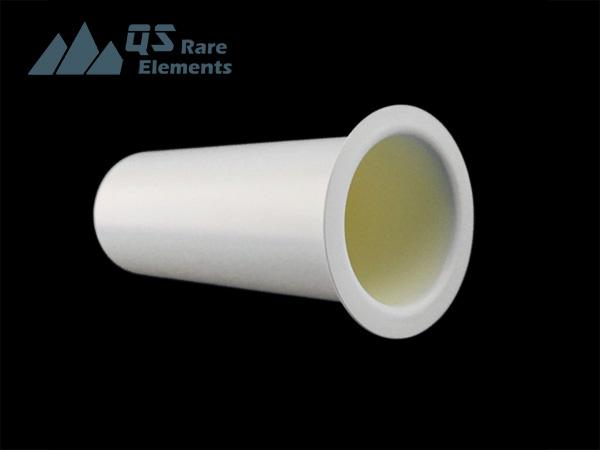Mg3Sb2 Single Crystals Enhance Thermoelectric Materials
The Importance of Thermoelectric Materials and the Rising Star Mg3Sb2
Under the dual pressure of the global energy crisis and environmental protection, scientists have been seeking effective energy conversion technologies. Thermoelectric materials, which can convert waste heat into electrical energy, not only serve as the foundation for solid-state refrigeration but also effectively recover waste heat from industrial processes and daily life, reducing energy waste. In this field, Mg3Sb2 has become a research hotspot due to its low cost, abundant resources, and environmentally friendly properties. Recently, a team led by Professor Min Jin and Professor Siqi Lin published their latest research results in "Materials Today Physics," revealing the huge potential of Mg3Sb2 single crystals in thermoelectric applications.
Experimental Methods and Crystal Growth
To thoroughly explore the thermoelectric properties of Mg3Sb2, the team employed the flux vertical Bridgman technique for single crystal growth. This method not only allows for control over the crystal growth direction and speed but also enables n-type conductivity through Mg vapor post-annealing treatment. The single crystals used in the study possess an inverted La2O3 structure with the space group P3-M1, and their layered structure is similar to that of the thermoelectric material Bi2Te3.

Schematic of vertical Bridgman technique used here (a) and the morphology of as grown (b) and cleaved Mg3Sb2 single crystals (c, d, e).
The Critical Role of PBN Crucibles in Crystal Growth
Why choose PBN (pyrolytic boron nitride) crucibles for the growth of Mg3Sb2 single crystals? Firstly, PBN crucibles have extremely high heat resistance and chemical stability, which are indispensable for high-temperature crystal growth processes. Secondly, the unique conical bottom design of PBN crucibles helps optimize the crystal growth direction and morphology, promoting a clear separation of the crystal at the solid-liquid interface, which is crucial for maintaining crystal quality and purity. Moreover, the physical properties of the crucible can reduce the adhesion between the crystal and the crucible wall, simplifying the crystal extraction process and avoiding potential crystal damage.
QSAM Inc., as a leading manufacturer of PBN crucibles in the market, provides high-quality services to scientific research users. Their professional manufacturing capabilities and customization services allow researchers to obtain the most suitable high-quality crucibles according to their experimental needs, facilitating in-depth scientific research.

PBN Crucible
Thermoelectric Properties of Mg3Sb2 Single Crystals
Through carefully designed experiments, the team successfully grew Mg3Sb2 single crystals with dimensions of 8mm x 10mm x 25mm. The crystals tend to cleave along the ab plane, exhibiting a mirror-like smooth surface. Measurements revealed that the electronic and thermal transport properties of these single crystals are nearly isotropic in the ab plane and c-axis directions, a rare characteristic among crystalline thermoelectric materials. Most remarkably, the material exhibits an extremely high thermoelectric figure of merit (ZT) of 1.7 at room temperature, which is among the top-level values in existing thermoelectric materials.
Future Prospects and Application Potential
This research on Mg3Sb2 single crystals not only demonstrates their immense potential in the thermoelectric field but also points out future research directions. The research team plans to further optimize the crystal growth conditions and explore different doping elements to adjust and enhance the material's electronic structure and thermoelectric properties. Additionally, how to apply these high-performance single-crystal thermoelectric materials to sustainable energy systems, such as solar thermal power generation and industrial waste heat recovery, will be the focus of future research.
The low cost and non-toxicity of Mg3Sb2, coupled with its excellent thermoelectric properties, provide possibilities for its widespread application in commercial and industrial settings. In the future, this material may be used to develop more efficient thermoelectric generators and refrigeration devices, playing a crucial role in improving global energy utilization efficiency and environmental protection.
Conclusion
The team led by Professor Min Jin and Professor Siqi Lin successfully grew high-performance Mg3Sb2 single crystals under controlled conditions using high-quality PBN crucibles, opening up a new realm in thermoelectric materials research. This significant scientific advancement not only deepens our understanding of the physical properties of thermoelectric materials but also provides new material choices for future energy technology innovations and environmental protection strategies. With further research and development, it is expected that Mg3Sb2 and its derivative materials will play a greater role in the future energy market.
